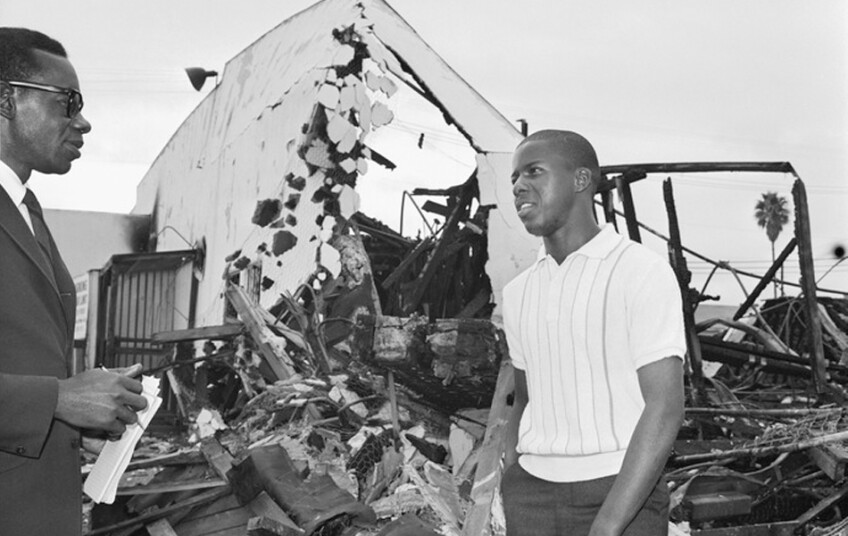August 1965 - Riots Break Out in Watts
On August 11, 1965, a drunk driving arrest touched off a public skirmish involving local residents and law enforcement, eventually erupting into six days of rioting on the streets of the Los Angeles community of Watts.

That evening, Lee Minikus, a white California Highway Patrol officer, pulled over 21 year-old black motorist Marquette Frye for reckless driving at the intersection of 116th Street and Avalon Boulevard in Watts. After failing a sobriety test, Frye was placed under arrest, and his car, a 1955 Buick registered under his mother's name, was impounded. The passenger of the car, Frye's brother Ronald, walked home and brought their mother, Rena Price, back to the scene.
A physical altercation involving Price, the arrested Frye, and officers erupted, and backup officers physically subdued Frye as a group of local residents witnessed the scene. The crowd grew in size and soon started shouting and throwing objects at the officers, and Price and Ronald Frye were arrested as well.
Additional officers brought onto the scene were met by crowds throwing rocks, and the violent scene grew as clashes between residents and police, and eventually National Guardsmen, intensified. Businesses, mostly owned by whites, were burned and looted, triggered by unfair practices experienced by the black residents.
Many community members considered the event to be a rebellion, a reaction to decades of racial covenants and unfair housing practices, police brutality, a deficient educational system, and other socioeconomic factors. The Watts Riots became a key moment in the Civil Rights Movement.
By the time the civil unrest died down on August 17, 34 people died, over 1,000 were injured, and over 3,400 arrests were made. Arson and looting resulted in over $40 million in damage.
In the years following the 1965 Watts Riots, community leaders have attempted ways to engage and empower the community to rebuild the damage and better the community.
In 1972, the KCET program, "Doing It At The Storefront," an African American community public affairs program broadcast from South Central Los Angeles, was a response to the aftermath of the Watts Riots.